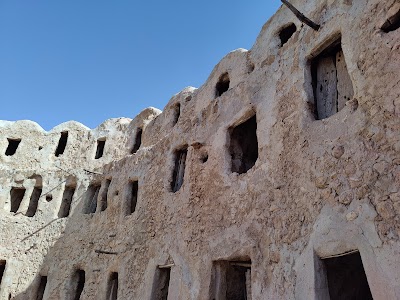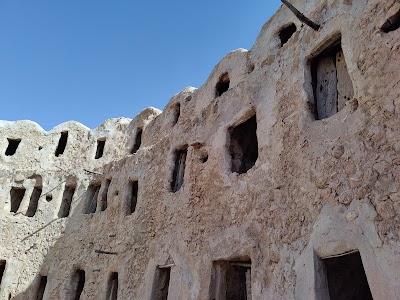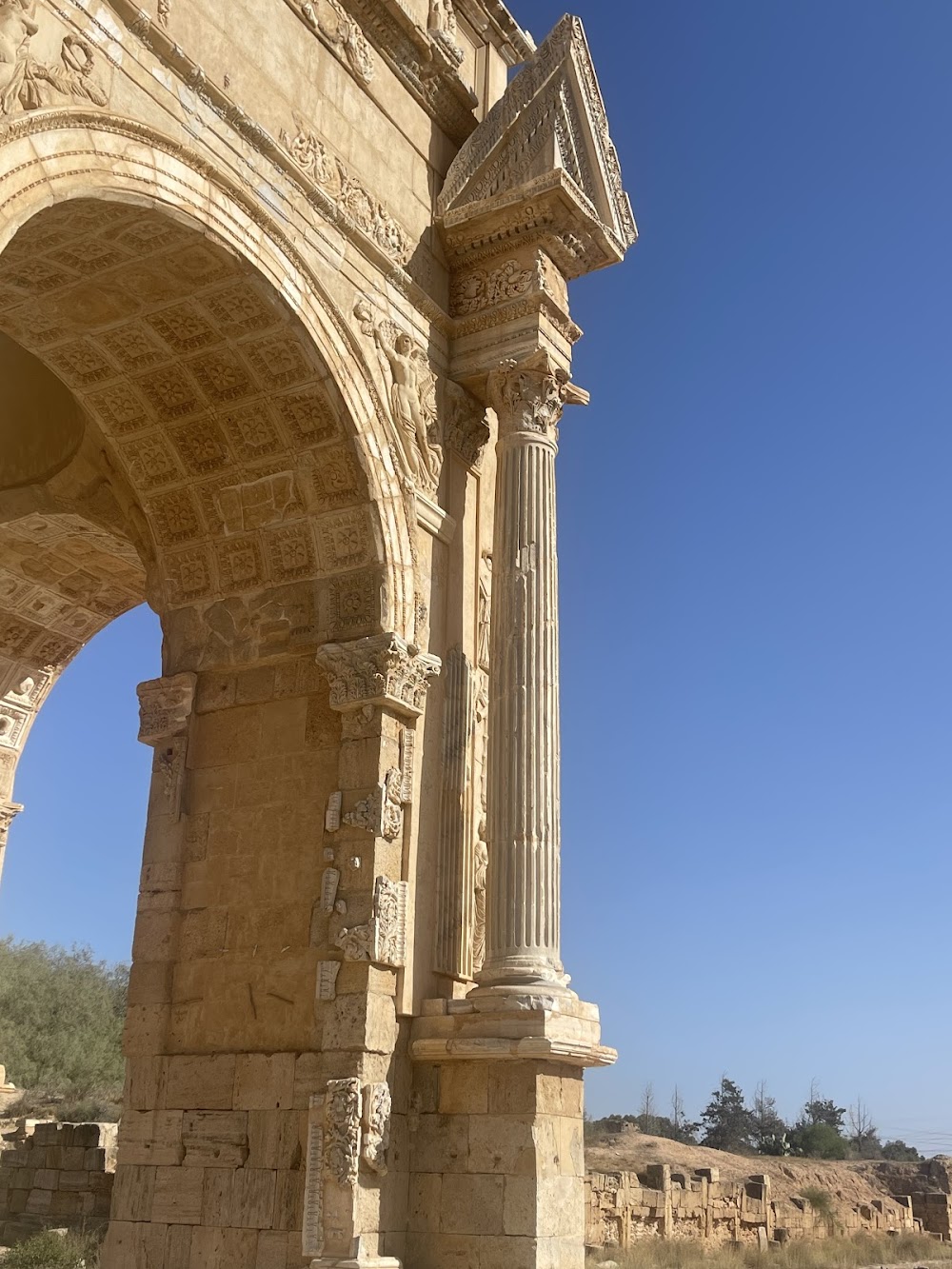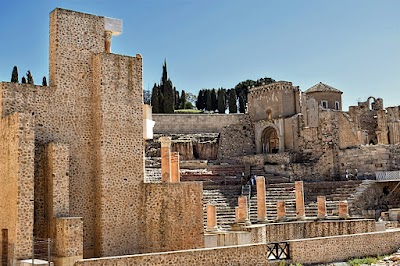Qasr Al-Haj (قصر الحاج)
Overview
Discover Qasr Al-Haj: A Historical Treasure in Northern Libya
Nestled in the Murqub district of northern Libya, Qasr Al-Haj is a captivating historical site that invites exploration. This ancient granary serves as a poignant reminder of the rich cultural heritage and architectural brilliance of the Berber communities that once flourished in this region. For foreign tourists eager for an immersive experience into Libya’s past, Qasr Al-Haj offers a unique and evocative journey through time.
A Marvel of Berber Architecture
Constructed around the 12th century, Qasr Al-Haj was ingeniously designed as a communal granary by the Berber tribesmen—a fortress-like structure intended for the secure storage of grains and other vital food supplies. Its distinctive circular design features a central courtyard surrounded by multi-storied storage rooms. Each room is owned by a family or tribe, providing a safe haven for their provisions against theft, pests, and the harsh desert climate.
A Symbol of Community and Cooperation
Beyond its functional role, Qasr Al-Haj stands as a symbol of community and cooperation. This granary was a collective effort, maintained and utilized by various families, which was crucial for survival in the challenging North African environment. As you wander through its many chambers, you can almost hear the echoes of daily life, where people came together to protect and share their resources.
Artistry Meets Functionality
One of the most intriguing aspects of Qasr Al-Haj is the blend of practicality and artistry. The exterior walls are adorned with intricate Berber geometric patterns, while the doorways to each storage room feature individually carved designs. Some rooms still bear traces of painted symbols and decorations that have withstood the test of time. This combination of functionality and aesthetic appeal transforms Qasr Al-Haj into a testament to the creativity and attention to detail of the Berber people.
An Engineering Marvel
The granary is also a masterpiece of ancient engineering, constructed using local materials such as stone and a unique mud-brick technique, resilient against the elements. The central courtyard serves as the focal point, complete with a well that once provided water for those working within the granary. The ingenuity behind Qasr Al-Haj’s construction is evident in its effective ventilation system, which keeps stored grains dry and preserved despite the relentless desert heat.
Journey to Qasr Al-Haj
For those eager to explore Qasr Al-Haj, the journey itself is part of the adventure. Located near the small town of Gharyan, known for its traditional Berber troglodyte homes and charming streets, the approach to Qasr Al-Haj reveals Libya’s breathtaking natural beauty—stark desert plains contrasted with lush oases, all under the expansive sky.
Engaging Tours and Insights
Visitors can take their time wandering through the granary's chambers, each telling its unique story of past families and the treasures they stored. Guided tours are highly recommended, as local guides provide in-depth insights into the history, architecture, and fascinating customs of the granary’s original users. Photographers and history enthusiasts alike will find Qasr Al-Haj a treasure trove of visual and intellectual inspiration.
A Cultural Destination Worth Visiting
As an enriching cultural destination, Qasr Al-Haj is perfect for those wishing to delve deeper into Libya’s heritage. Its serene atmosphere and sense of timelessness provide a striking contrast to the bustling modern world. Here, among the ancient storerooms, you can pause to reflect on the resourcefulness and community spirit that defined the Berber way of life.
Conclusion: An Unforgettable Experience
In conclusion, Qasr Al-Haj offers a unique glimpse into the ingenuity and endurance of Libya’s early inhabitants. Whether you’re an avid historian, a cultural enthusiast, or simply a curious traveler, this ancient granary will not disappoint. As you explore its stone walls and intricately carved doorways, you will gain a profound appreciation for the legacy left by those who once relied on this remarkable structure. Qasr Al-Haj stands today not just as a relic of the past but as an ongoing inspiration of human collaboration and survival. Be sure to add this gem to your itinerary when visiting Libya—it promises to be a memorable chapter in your travel story.







